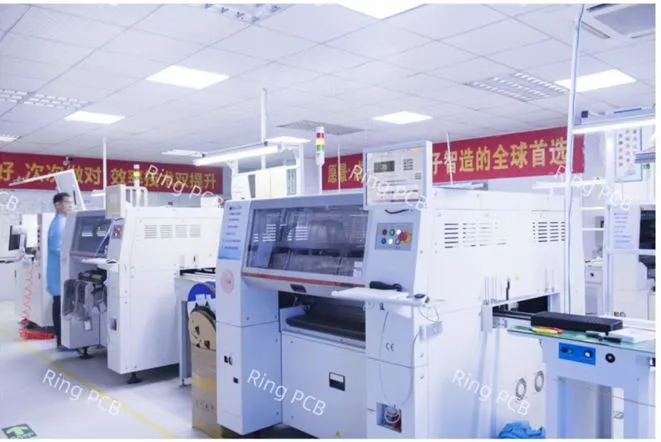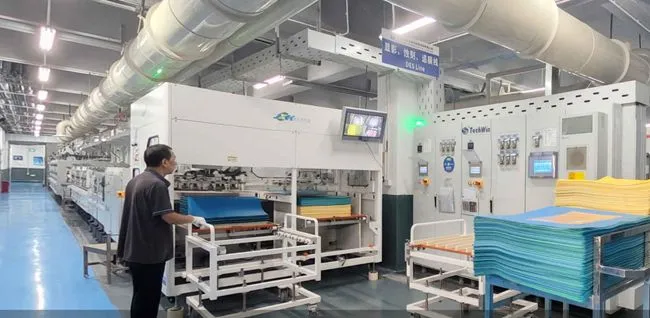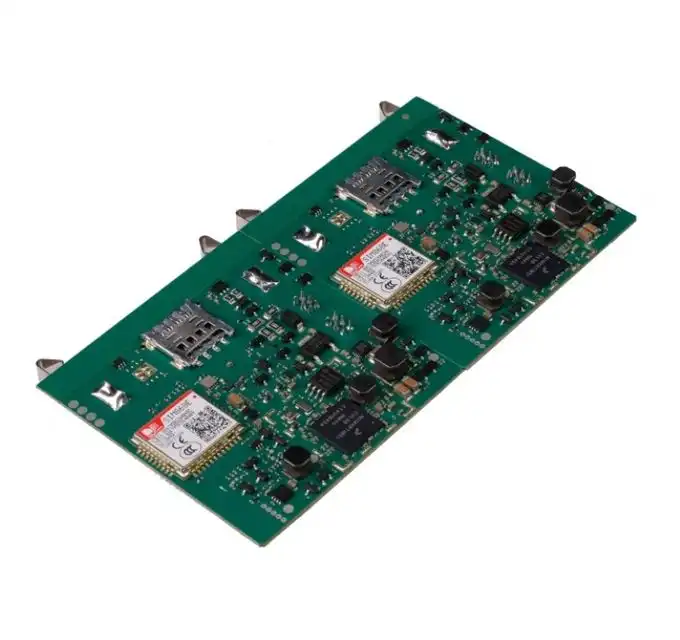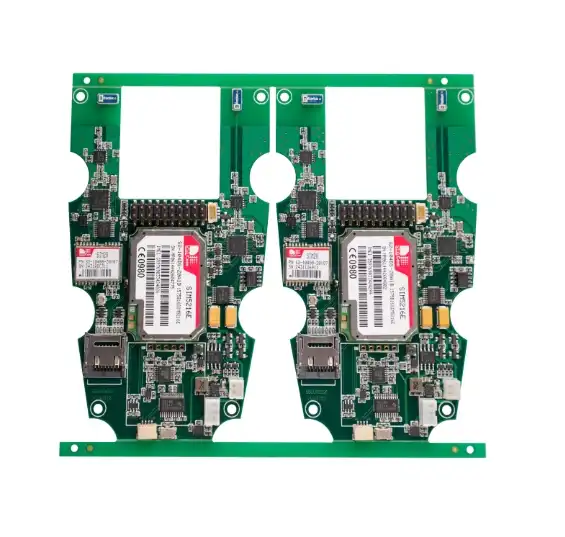Comprehending FR4 PCBs: Properties and Applications
Composition and Characteristics of FR4 PCBs
FR4 (Flame Retardant 4) is a composite material widely used in PCB manufacturing. It consists of woven fiberglass cloth impregnated with epoxy resin, creating a strong and durable substrate. This composition gives FR4 PCBs excellent electrical insulation properties and mechanical strength, making them suitable for a wide range of applications.
The epoxy resin in FR4 PCBs provides resistance to moisture absorption and chemical corrosion, ensuring the longevity of the circuit board. Additionally, the flame-retardant properties of FR4 make it compliant with safety standards, a crucial factor in electronic device manufacturing.
Advantages of FR4 PCBs in Electronic Design
FR4 PCBs offer numerous advantages in electronic design and PCB manufacturing. Their versatility allows for complex multilayer designs, accommodating high-density component placement and intricate routing. This flexibility is particularly beneficial in creating sophisticated electronic systems with multiple interconnected layers.
The material's low dielectric constant and loss tangent contribute to improved signal integrity, especially in high-frequency applications. FR4's thermal stability ensures dimensional stability during the soldering process, facilitating reliable component assembly and minimizing warpage issues.
Common Applications of FR4 PCBs
FR4 PCBs find applications across various industries due to their balanced properties and cost-effectiveness. They are extensively used in consumer electronics, telecommunications equipment, industrial control systems, and automotive electronics. The material's adaptability makes it suitable for both through-hole and surface-mount technology (SMT) assembly processes.
In the realm of high-speed digital circuits, FR4 PCBs serve as the foundation for computer motherboards, network routers, and data processing equipment. Their reliability and performance characteristics make them a preferred choice for medical devices, aerospace electronics, and military applications where stringent quality standards must be met.
Exploring Aluminum PCBs: Thermal Management and Performance
Structure and Thermal Properties of Aluminum PCBs
Aluminum PCBs, also known as metal core PCBs (MCPCBs), feature a unique structure designed for superior thermal management. The core of these PCBs consists of an aluminum base, typically ranging from 1mm to 3mm in thickness. This aluminum layer is covered with a thin dielectric material, followed by the copper circuitry layer.
The aluminum core acts as an efficient heat spreader, rapidly dissipating heat generated by electronic components. This thermal conductivity is significantly higher than that of FR4, making aluminum PCBs ideal for applications where heat management is critical. The thermal conductivity of aluminum PCBs can be further enhanced through the use of specialized thermal interface materials and optimized PCB layout designs.
Benefits of Aluminum PCBs in High-Power Applications
Aluminum PCBs excel in high-power applications where thermal management is paramount. In PCB manufacturing, their ability to efficiently dissipate heat allows for higher current-carrying capacity and improved overall system reliability. This characteristic is particularly advantageous in power electronics, where components often operate at elevated temperatures.
The enhanced thermal performance of aluminum PCBs enables designers to reduce the size of heat sinks or eliminate them altogether in some cases. This can lead to more compact and cost-effective designs, especially in space-constrained applications. Additionally, the improved heat dissipation can extend the lifespan of electronic components by preventing thermal stress and fatigue.
Industries and Products Utilizing Aluminum PCBs
Aluminum PCBs have found widespread adoption in industries requiring high-power density and efficient thermal management. The LED lighting industry, in particular, has embraced aluminum PCBs for their ability to dissipate heat generated by high-brightness LEDs. This includes applications such as automotive lighting, street lighting, and high-power LED displays.
Power supply units, motor drives, and inverters in industrial and automotive sectors also benefit from aluminum PCBs. These applications often involve high current flows and require robust thermal management to ensure reliable operation. In the renewable energy sector, aluminum PCBs are utilized in solar inverters and wind turbine control systems, where efficiency and longevity are crucial factors.
Factors to Consider When Choosing Between FR4 and Aluminum PCBs
Thermal Requirements and Heat Dissipation Needs
When selecting between FR4 and aluminum PCBs, thermal management is a primary consideration. Applications generating significant heat or requiring precise temperature control may benefit from aluminum PCBs' superior thermal conductivity. FR4 PCBs, while less thermally conductive, can still be suitable for many applications with moderate heat generation.
Consider the power density of your design and the operating environment. High-power components clustered in a small area might necessitate the use of aluminum PCBs to prevent localized hot spots. Conversely, designs with distributed heat sources or lower power requirements may function adequately with FR4 PCBs, potentially with additional cooling measures if needed.
Cost Considerations and Production Volume
Cost is a significant factor in PCB manufacturing decisions. FR4 PCBs generally offer a more cost-effective solution, especially for large-scale production runs. The raw materials and manufacturing processes for FR4 PCBs are well-established, contributing to their economic advantage.
Aluminum PCBs, while more expensive, can provide long-term cost benefits in certain applications. Their improved thermal management may reduce the need for additional cooling components, potentially lowering overall system costs. Consider the production volume and the total cost of ownership, including potential savings in thermal management and increased reliability, when making your decision.
Environmental Factors and Reliability Requirements
The operating environment plays a crucial role in material selection. FR4 PCBs offer good resistance to moisture and chemicals, making them suitable for a wide range of environmental conditions. However, in extremely harsh environments or applications exposed to severe temperature fluctuations, aluminum PCBs may provide better long-term reliability due to their thermal stability and resistance to warping.
Consider factors such as humidity, vibration, and temperature cycling when choosing between FR4 and aluminum PCBs. Applications in aerospace, automotive, or outdoor environments may benefit from the robustness of aluminum PCBs, while controlled indoor environments might be well-served by FR4 PCBs.
Design Complexity and Manufacturing Constraints
The complexity of your PCB design can influence the choice between FR4 and aluminum substrates. FR4 PCBs offer greater flexibility in terms of layer count and via structures, accommodating complex multilayer designs with ease. They are well-suited for high-density interconnect (HDI) and microvia technologies, essential for miniaturized electronic devices.
Aluminum PCBs, while excellent for thermal management, have limitations in terms of layer count and via structures. They are typically single or double-sided, making them less suitable for complex multilayer designs. Consider your circuit complexity, component density, and routing requirements when deciding between these materials.
Electromagnetic Interference (EMI) Considerations
Electromagnetic compatibility is an important aspect of PCB design, especially in sensitive electronic systems. FR4 PCBs, being non-conductive, do not inherently provide EMI shielding. However, they can be designed with ground planes and other EMI mitigation techniques to improve electromagnetic compatibility.
Aluminum PCBs, with their metal core, offer some inherent EMI shielding capabilities. This can be advantageous in applications where electromagnetic interference is a concern, such as in power electronics or high-frequency circuits. Consider the EMI requirements of your application and any regulatory standards that need to be met when choosing between FR4 and aluminum PCBs.
Conclusion
Choosing between FR4 and aluminum PCBs for your PCB manufacturing project requires careful consideration of various factors. FR4 PCBs offer versatility, cost-effectiveness, and suitability for complex multilayer designs, making them ideal for a wide range of applications. Aluminum PCBs excel in thermal management, making them the preferred choice for high-power and heat-intensive applications.
To make the best decision, evaluate your project's specific requirements, including thermal management needs, cost constraints, environmental factors, and design complexity. Consider consulting with experienced PCB manufacturers or suppliers who can provide insights into the most suitable material for your application. By carefully weighing these factors, you can select the PCB material that optimizes performance, reliability, and cost-effectiveness for your electronic product.

FAQ
Can aluminum PCBs be used for all types of electronic applications?
Aluminum PCBs are best suited for applications requiring efficient heat dissipation, such as LED lighting and power electronics. They may not be ideal for complex multilayer designs or applications without significant thermal management needs.
Are FR4 PCBs suitable for outdoor applications?
FR4 PCBs can be used in outdoor applications with proper protection and conformal coating. However, for extreme environments, aluminum PCBs may offer better long-term reliability due to their thermal stability and resistance to warping.
How do I determine if my application requires an aluminum PCB?
Consider factors such as power density, operating temperature, and thermal management requirements. If your application generates significant heat or requires precise temperature control, an aluminum PCB might be the better choice.
Expert PCB Manufacturing and Assembly Services | Ring PCB
At Ring PCB, we offer comprehensive PCB manufacturing and assembly services tailored to your specific needs. Our expertise spans FR4, aluminum, and other specialized PCB materials, ensuring optimal performance for your projects. From rapid prototyping to high-volume production, we provide one-stop solutions including SMT assembly, testing, and quality assurance. Experience our cutting-edge technology and commitment to excellence. Contact us at [email protected] to discuss your PCB requirements with our expert team.
References
1. Johnson, A. (2022). "Advanced PCB Materials: A Comprehensive Guide to FR4 and Aluminum Substrates." Journal of Electronic Manufacturing, 15(3), 78-92.
2. Smith, R. & Lee, K. (2021). "Thermal Management in High-Power Electronics: FR4 vs. Aluminum PCBs." IEEE Transactions on Components, Packaging and Manufacturing Technology, 11(2), 235-247.
3. Chen, Y. et al. (2023). "Comparative Analysis of FR4 and Aluminum PCBs in LED Lighting Applications." Lighting Research & Technology, 55(4), 412-428.
4. Brown, T. (2020). "Material Selection in PCB Design: Balancing Performance and Cost." International Journal of Electronics Manufacturing, 8(1), 45-59.
5. Wilson, E. & Garcia, M. (2022). "Environmental Reliability of FR4 and Aluminum PCBs in Harsh Operating Conditions." IEEE Reliability Society Symposium Proceedings, 189-203.






